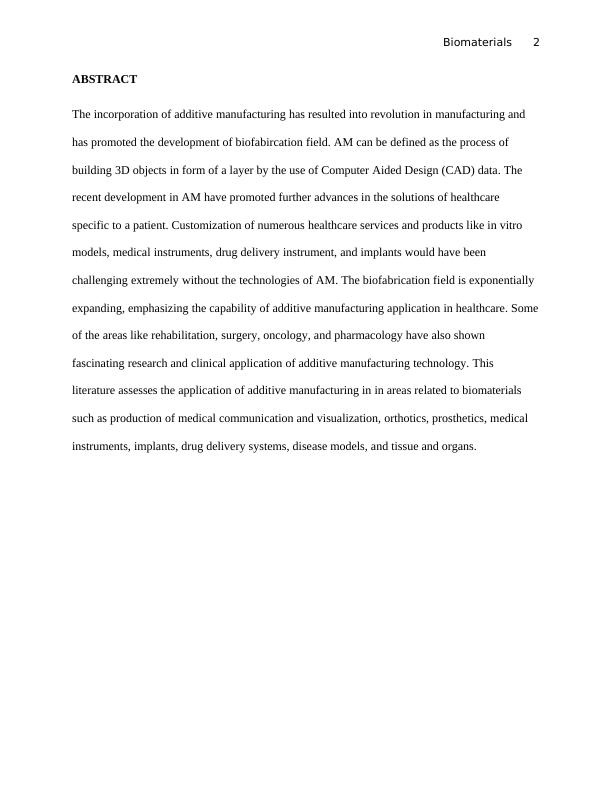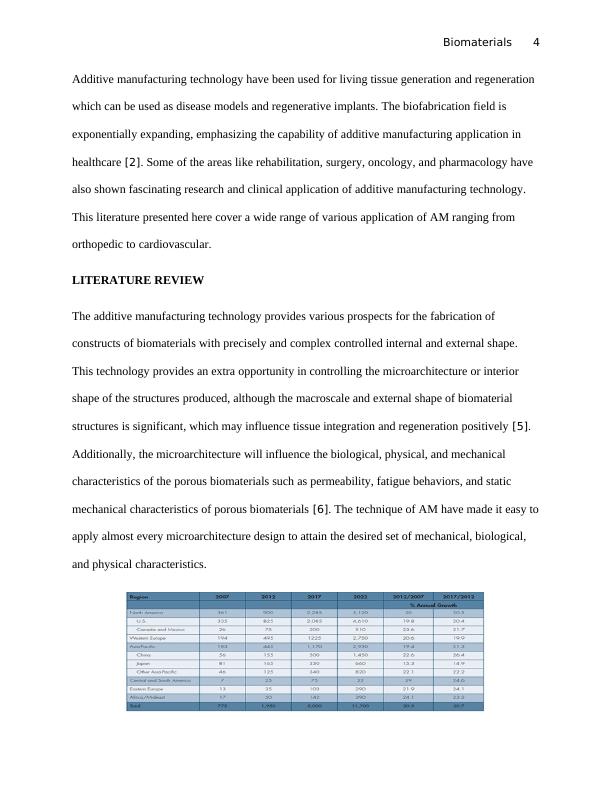Additive Manufacturing of Biomaterials
13 Pages2608 Words114 Views
Added on 2022-11-13
About This Document
This literature assesses the application of additive manufacturing in in areas related to biomaterials such as production of medical communication and visualization, orthotics, prosthetics, medical instruments, implants, drug delivery systems, disease models, and tissue and organs.
Additive Manufacturing of Biomaterials
Added on 2022-11-13
ShareRelated Documents
End of preview
Want to access all the pages? Upload your documents or become a member.
3D printing applications for the biome PDF
|3
|834
|99
Annotated Bibliography - Assignment PDF
|4
|610
|77
Report on Selective Laser Melting
|6
|690
|316
Emerging Materials in Additive Manufacturing Literature Review
|9
|1833
|210
Report on 3D Bio-CAD model
|10
|3405
|175
Effects Of Laser Scan Speed - Doc
|11
|2609
|199




